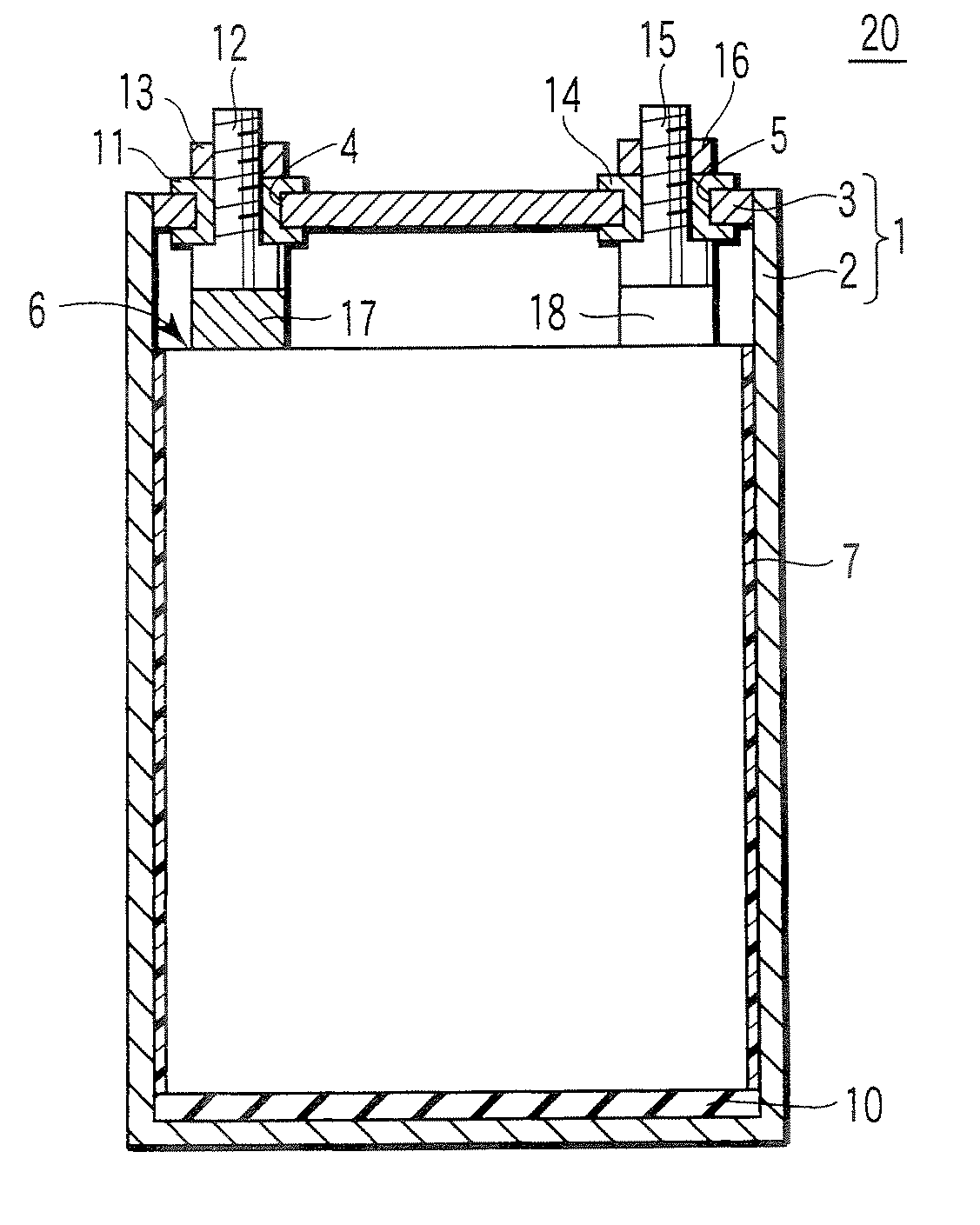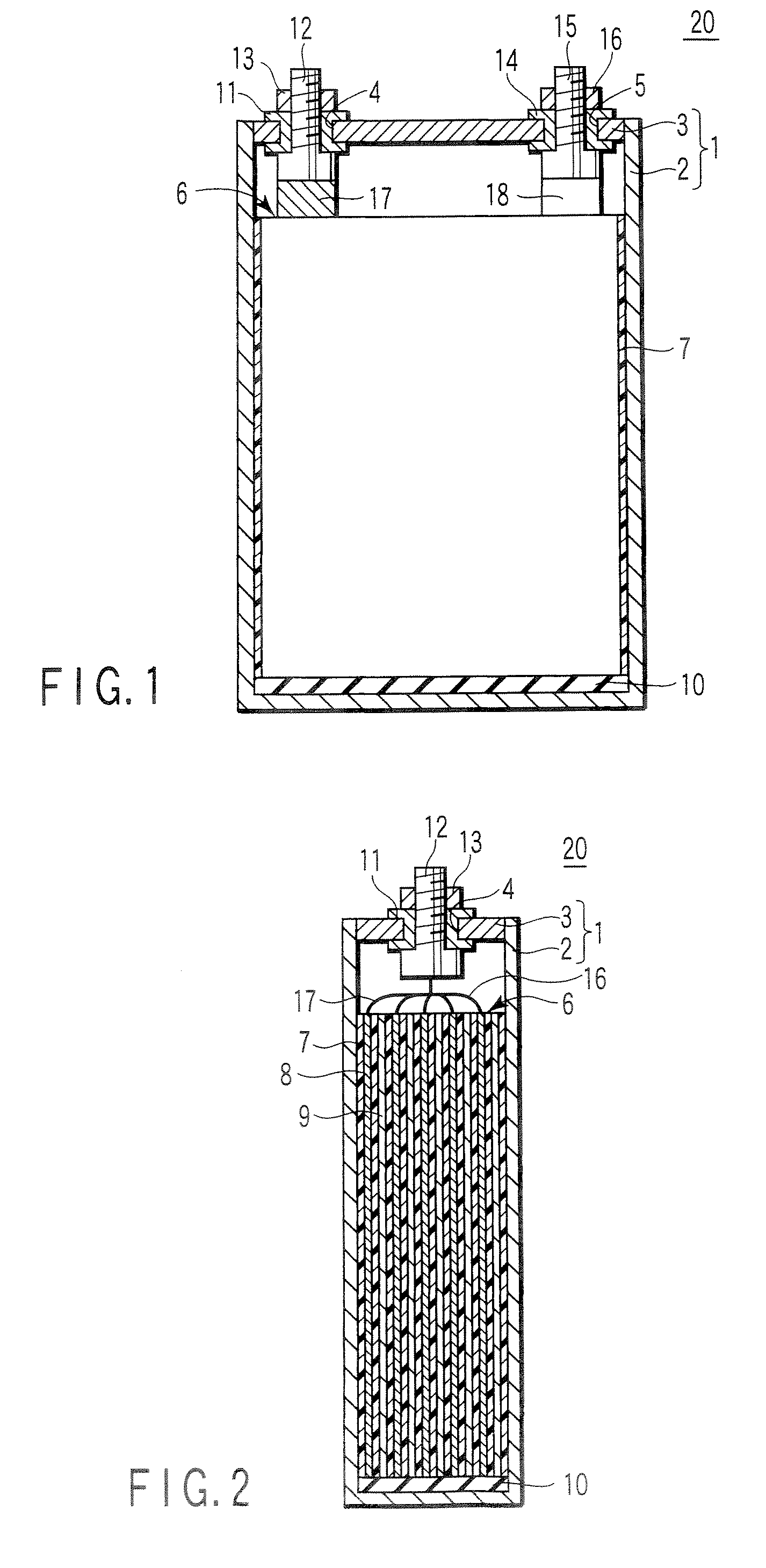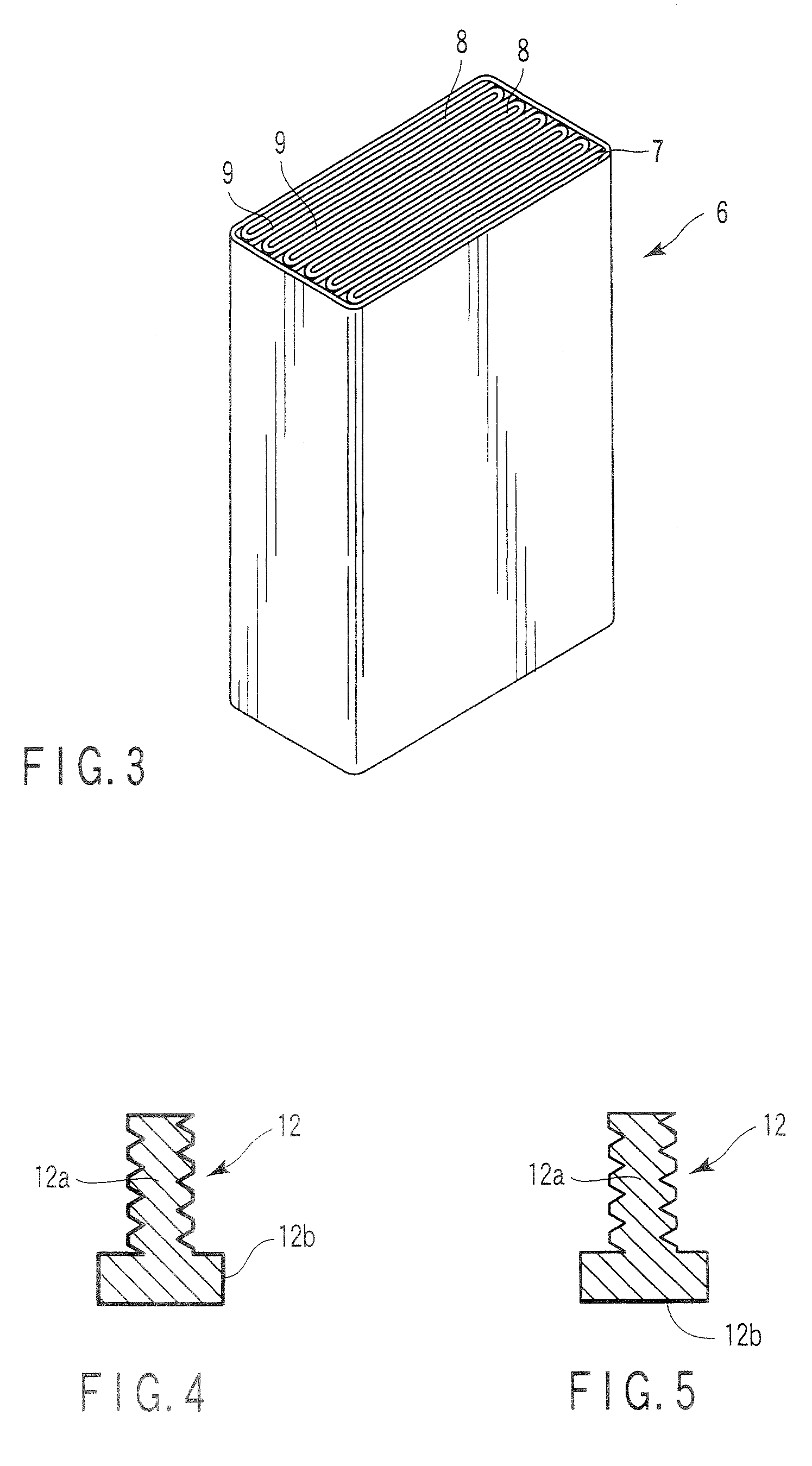Nonaqueous electrolyte secondary battery and battery module
a secondary battery and battery module technology, applied in the direction of batteries, sustainable manufacturing/processing, cell components, etc., can solve the problems of secondary battery energy density reduction, overdischarge in certain batteries, and broken battery capacity balan
- Summary
- Abstract
- Description
- Claims
- Application Information
AI Technical Summary
Benefits of technology
Problems solved by technology
Method used
Image
Examples
first embodiment
[0041]A square nonaqueous electrolyte secondary battery according to a first embodiment comprises a metal outer container, a nonaqueous electrolyte contained in the container, a positive electrode contained in the container, a negative electrode contained in the container and having an active material for intercalating lithium ions at a potential of 0.4 V or more with respect to an electrode potential of lithium, and a separator interposed between the negative electrode and the positive electrode. A negative electrode lead has one end connected to the negative electrode. The negative electrode lead is made of aluminum with a purity of 99 wt. % or more, or aluminum alloy with an aluminum purity of 99 wt. % or more. A negative electrode terminal is attached to the container so as to be connected to the other end of the negative electrode lead. At least the surface of the negative electrode terminal connected to the negative electrode lead is formed of aluminum alloy with aluminum puri...
second embodiment
[0118]A square nonaqueous electrolyte secondary battery according to a second embodiment comprises a metal outer container serving also as a negative electrode terminal, a nonaqueous electrolyte contained in the container, a positive electrode contained in the container, a negative electrode contained in the container and having an active material for intercalating lithium ions at a potential of 0.4 V or more with respect to an electrode potential of lithium, and a separator interposed between the negative electrode and the positive electrode. A negative electrode lead has one end connected to the negative electrode, and the other end connected to the inner surface of the outer container. The negative electrode lead is made of aluminum with a purity of 99 wt. % or more, or aluminum alloy with an aluminum purity of 99 wt. % or more. In the outer container to which such a negative electrode lead is connected, at least the inner surface, which is connected to the negative electrode ter...
example 1
[0149]
[0150]Lithium titanate (Li4Ti5O12) having an average diameter of primary particles of 0.5 μm, and specific surface area of BET by N2 gas of 20 m2 / g as an active material, carbon powder having an average particle size of 4 μm as a conductive agent, and polyvinylidene fluoride (PVdF) as a binder were blended by 90:7:3 by weight, and the mixture was dispersed in an n-methyl pyrrolidone (NMP) solvent to prepare a slurry. The slurry was applied to an aluminum alloy foil (current collector) to a thickness of 15 μm, with an average diameter of crystal grains of 50 μm, and purity of 99 wt. %, and dried, pressed, and cut to prepare 60 plates of negative electrodes with a size of 140 mm×330 mm and electrode density of 2.5 g / cm3. A belt-like lead made of aluminum foil with a width of 10 mm, a length of 30 mm, thickness of 200 μm, and purity of 99.9 wt. % was bonded to one end of the current collector of each of the negative electrodes by resistance welding.
[0151]
PUM
| Property | Measurement | Unit |
|---|---|---|
| internal resistance | aaaaa | aaaaa |
| electrode potential | aaaaa | aaaaa |
| average diameter | aaaaa | aaaaa |
Abstract
Description
Claims
Application Information
 Login to View More
Login to View More - R&D
- Intellectual Property
- Life Sciences
- Materials
- Tech Scout
- Unparalleled Data Quality
- Higher Quality Content
- 60% Fewer Hallucinations
Browse by: Latest US Patents, China's latest patents, Technical Efficacy Thesaurus, Application Domain, Technology Topic, Popular Technical Reports.
© 2025 PatSnap. All rights reserved.Legal|Privacy policy|Modern Slavery Act Transparency Statement|Sitemap|About US| Contact US: help@patsnap.com



